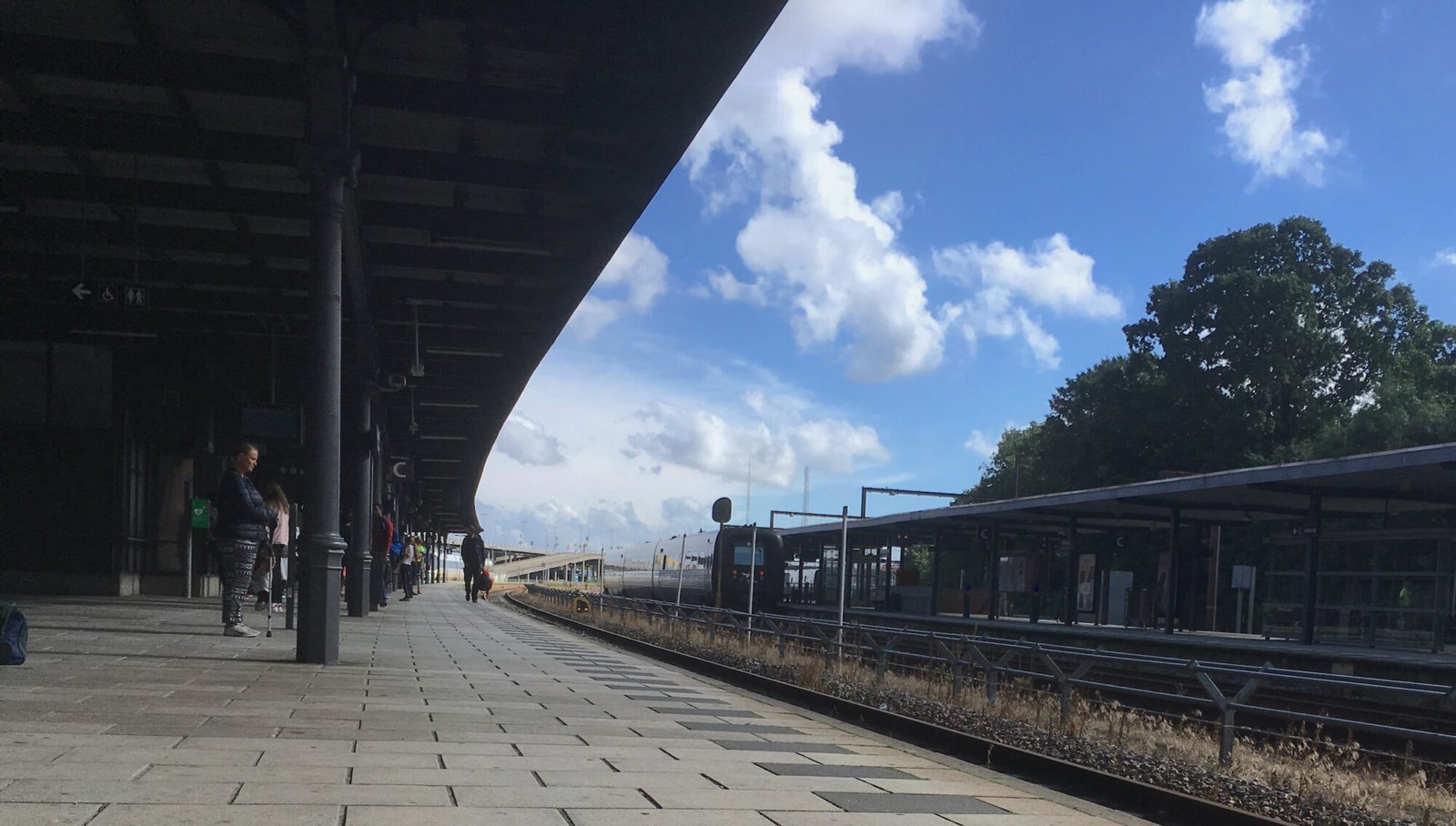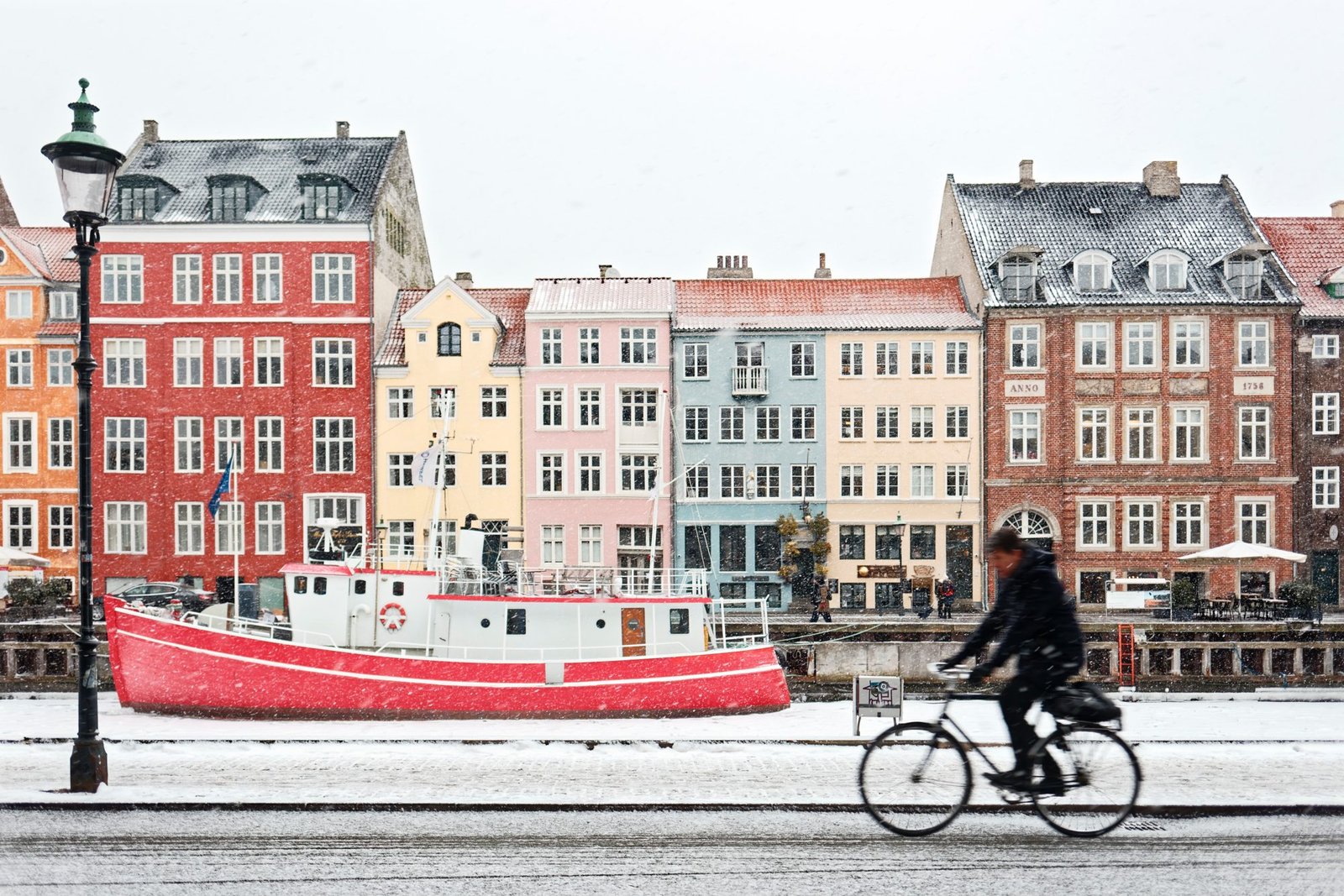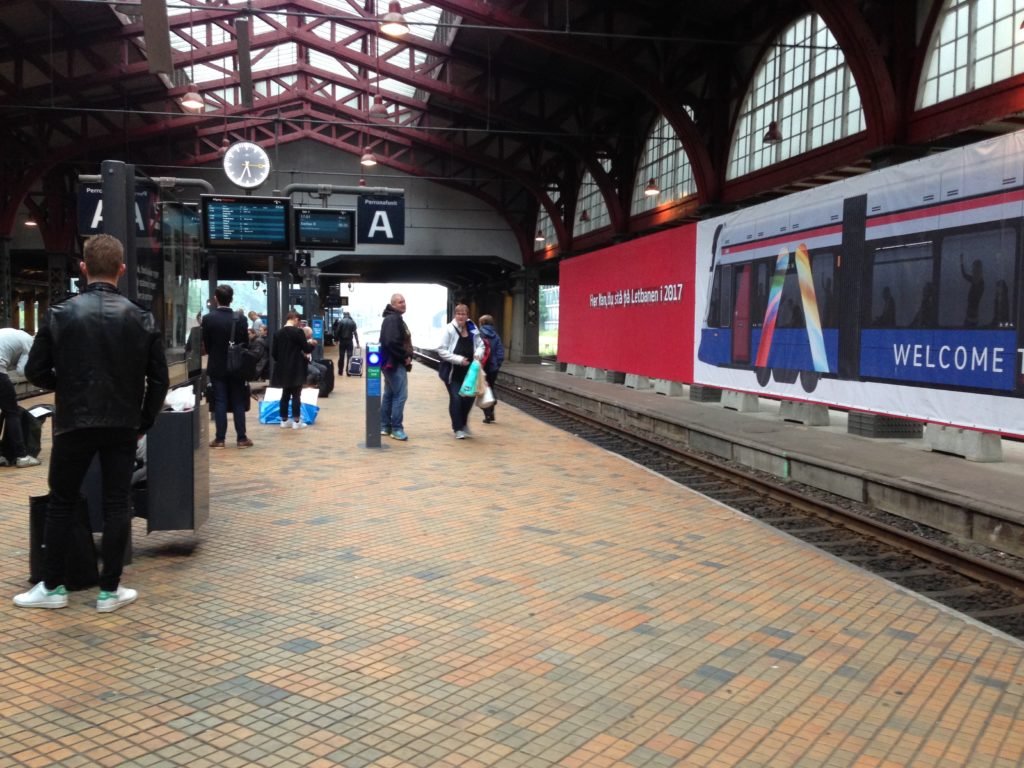
Countless Interrail travelers pass through Denmark on their journey. All the popular destinations in Denmark are easy to reach by train, so it’s an obvious way to travel around the country.
But buying regular train tickets can be expensive in Denmark. Even short distances can be relatively expensive, and traveling between the main cities is even more costly. An Interrail pass can give you cheaper access, and it obviously lets you travel to neighboring countries as well.
Here is a full guide to Interrail in Denmark if you are interested in doing such a trip!
Contents
Choose your Interrail Pass
First and foremost, you need an Interrail Pass to do an Interrail trip.
You can either get a travel pass just for Denmark (prices start at €105) or a global pass covering most of Europe (prices start at €208).
If you only intend on visiting Denmark, then get the local travel pass.
But for most travelers, Denmark will only be part of the journey, and therefore it’s best to get a global pass. That way you can also visit neighboring countries such as Sweden and Germany, along with any other European destination that you have in mind.
Destinations in Denmark
Denmark has several nice cities and towns you can consider visiting.
Copenhagen is the capital and the largest city. If you are into history, art, shopping or general entertainment, Copenhagen is a great city to visit. Furthermore, it is very close to the Swedish city Malmö, so it’s the perfect entry point if you intend to continue your trip to Sweden. Read our articles about where to stay in Copenhagen and the best attractions to see.
Aarhus is the second largest city, located centrally in the country. It’s one of the oldest cities in Denmark, but these days it’s primarily known as a booming university city with great nightlife. Due to its central location in Denmark, it’s an ideal city to use as a base for your trip. Find out where to stay in Aarhus here.
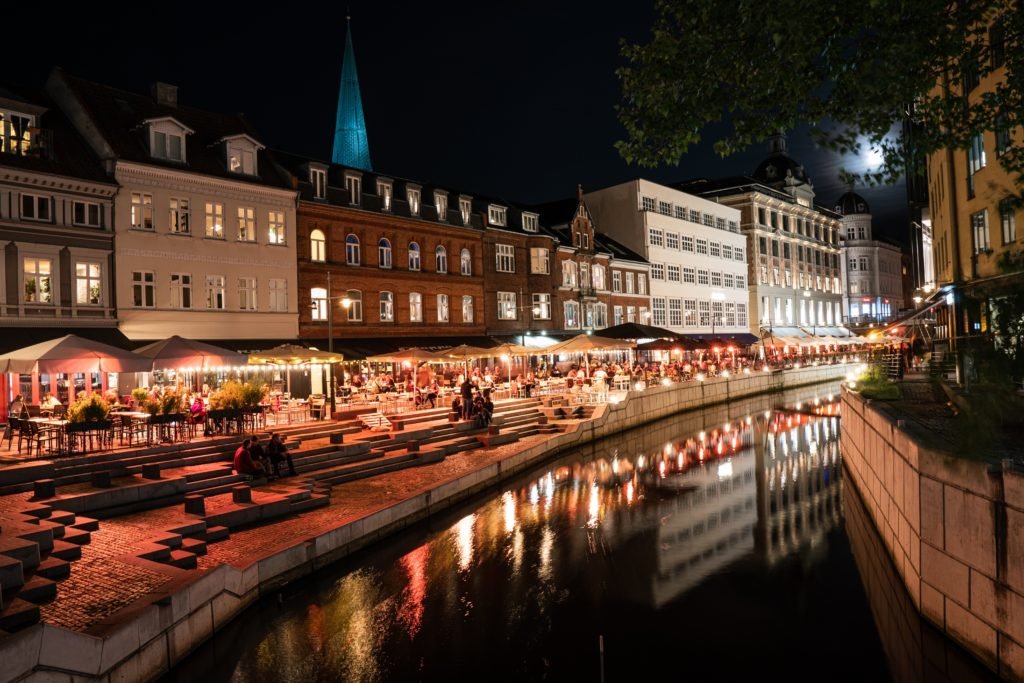
Odense is the home city of the world-famous author, H.C. Andersen. Located on the island of Funen, between Copenhagen and Aarhus, it’s a great place to go for a day or two. History lovers will be particularly enchanted by it – but all visitors are set to enjoy Odense and its beautiful streets. Read our Odense travel guide here.
Aalborg is the largest city in the north of Denmark. It used to be a heavily industrial city, but in the last couple of decades, it has evolved into a center for education, art and entertainment. Aalborg is home to Northern Europe’s largest annual carnival. The locals refer to the city as “The Paris of the North”. While it’s lacking a bit in size, the charm of Aalborg does justify that title a little bit.
Learn about the best attractions and find out where to stay in Aalborg through our articles.
All the main cities are connected to each other with the national train network. It rarely takes more than a few hours to reach any major location in the country.
Some other places worth visiting in Denmark:
- Roskilde (near Copenhagen)
- Helsingør (also near Copenhagen)
- Bornholm island
- Esbjerg
- Sønderborg
- Herning (near Aarhus)
- Vejle (also near Aarhus)
- Billund (home of Legoland)
- Løkken (near Aalborg)
- Skagen (the northernmost town in Denmark)
Trains in Denmark
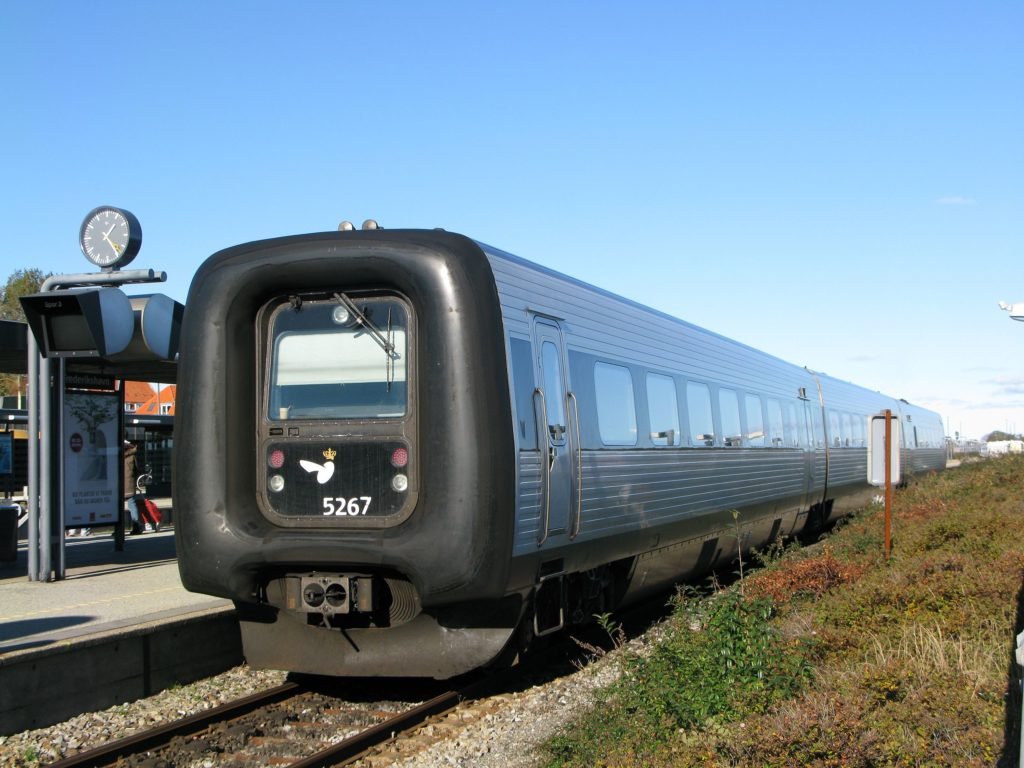
Photo: Matthias Schalk – CC BY-SA 3.0
DSB is the company that runs all domestic trains in Denmark – with some exceptions in the northern region where a local company handles most of the trains. Some Swedish and German companies are also active near the border area. But more about that later.
The most popular type of train in Denmark is the InterCity Lyn train. It runs between the north of Denmark (depending on the route, it starts in either Frederikshavn or Aalborg) and continues all the way to Copenhagen, with the CPH airport usually being the final destination.
The InterCity Lyn only stops in the cities and major towns. However, there is also the regular InterCity train – it stops more frequently in smaller towns along the way. That makes it slower, but it covers more stations.
There are also regional trains in some Danish regions, under sub-divisions of DSB. They cover regional routes, usually having many stops in even the smallest towns.
Urban rail
Copenhagen has some trains that are just operating in the city and its suburbs. S-Tog is the name of the suburban trains and they run several times per hour every single day.
Copenhagen also has a metro, mainly covering the city center and a few suburban areas.
Aarhus has a relatively new light rail system (opened in 2017). It covers the center of the city and some outer areas. The system is currently being expanded into more lines. Odense has a small light rail system as well.
The urban trains in Copenhagen, Aarhus and Odense are very useful for exploring these cities in detail. They are usually fast and somewhat stable.
All the other Danish cities and towns do not currently have metros, light rail, or local suburban trains. They do, however, have a lot of frequent buses.
Travel times between Danish cities
A quick overview of expected travel times between the main cities in Denmark. In order, from north to southeast.
Aalborg-Aarhus: 1h30min
Aalborg-Odense: 3h15min
Aalborg-Copenhagen: 4h30min
Aarhus-Odense: 1h35min
Aarhus-Copenhagen: 3 hours
Aarhus-Esbjerg: 2h25min
Odense-Copenhagen: 1h20min
Roskilde-Copenhagen: ~30min
International connections
The SJ high-speed train runs between Denmark and Sweden. It connects Copenhagen to Malmö and continues to other Swedish destinations. One of SJ’s connections goes all the way from Copenhagen to Stockholm.
InterCity Express (ICE) trains go from Aarhus and Copenhagen to Hamburg in Germany, operated by DB.
Here are the international connections and expected travel times:
- Copenhagen-Hamburg: 4h45min
- Copenhagen-Malmö: 42min
- Copenhagen-Oslo (via Gothenburg): 7h30min
- Aarhus-Hamburg: 4h30min
You can also find longer connections, such as the Copenhagen-Basel route, but these connections will usually have long stops or shifts along the way.
When is the Interrail Pass valid?
An Interrail Pass is valid on all trains in Denmark.
InterCity Lyn, InterCity, S-Tog, and local trains such as Nordjyske Jernbaner are all fully included in your Interrail privileges.
However, it is recommended that you book a seat reservation if you travel with InterCity Lyn or InterCity in the morning or in the afternoon – since they are usually full at these times. But it is completely up to you. You can sit down in any free seat that hasn’t been reserved. Even if all seats are reserved, you can still stand up on the train – it is not compulsory to book a seat reservation with InterCity trains, so do not worry about whether you’re able to travel with them or not. You can always do so if you have a valid Interrail Pass.
If you take the InterCity Express into Germany, you must book a seat reservation along with your pass in the summer months. However, in the winter months, early spring and late fall, it is not officially necessary to reserve a seat (but still a good idea). Find more information here.
The SJ high-speed train into Sweden also requires you to book a seat reservation. You can only take the train if you have a reservation on top of your Interrail pass. So don’t get on this particular train without reserving a seat in advance!
Seat reservations in Denmark for Interrailers
If you want to book a seat on the InterCity Lyn or InterCity trains in Denmark, which is not compulsory but still a good idea, you can book it at the station, by calling DSB, or through an online reservation service. You can book it online here. It costs 30 DKK (€4) to make a seat reservation, no matter how long the journey is.
The price is approximately the same if you want a seat reservation for the ICE going into Germany. Once again, you can book it at the station, by calling either DSB or DB in advance, or by using the online reservation service for Interrail card holders. It is necessary to book a seat in the summertime, but not compulsory for the rest of the year.
To reserve a seat on the SJ train headed into Sweden, which is always required for Interrailers, you have to pay 126 DKK (€27) for a first-class reservation or 52 DKK (€7) for a second-class reservation.
Ferry discounts with Interrail
Want to take a ferry to Norway? If so, good news: You can get up to 20% discount on the ferry ticket if you have an Interrail Pass. There may also be discounts on ferries to Sweden, Germany and Poland, but they can vary a lot, so you need to check up on that yourself. It’s always something you can ask when you book your ferry ticket (can usually be done directly at the port).
Conclusion
Interrail in Denmark can be quite an adventure. You get the chance to see modern cities such as Copenhagen and Aarhus, but also various hidden gems in Denmark.
As mentioned earlier, you can book an Interrail Pass just for Denmark, or you can book the Global Pass where you can travel all over Europe. We recommend the Global Pass since Denmark is a small country and since most foreign travelers get the urge to see Sweden and Germany anyway.
Enjoy your trip!


